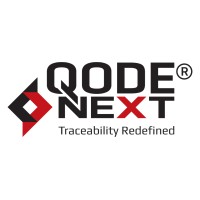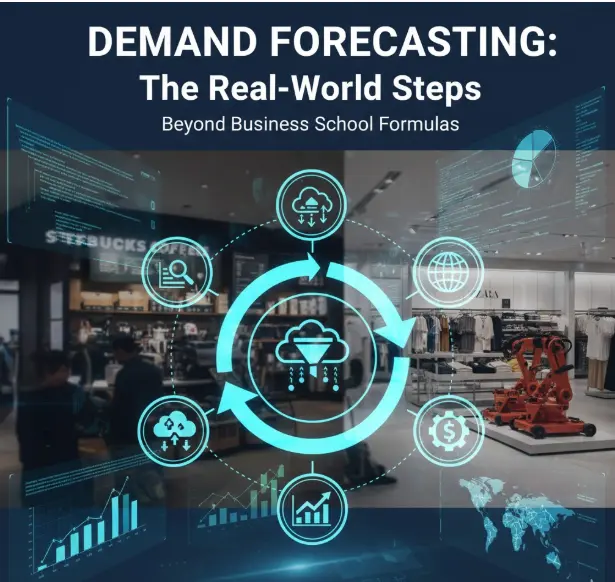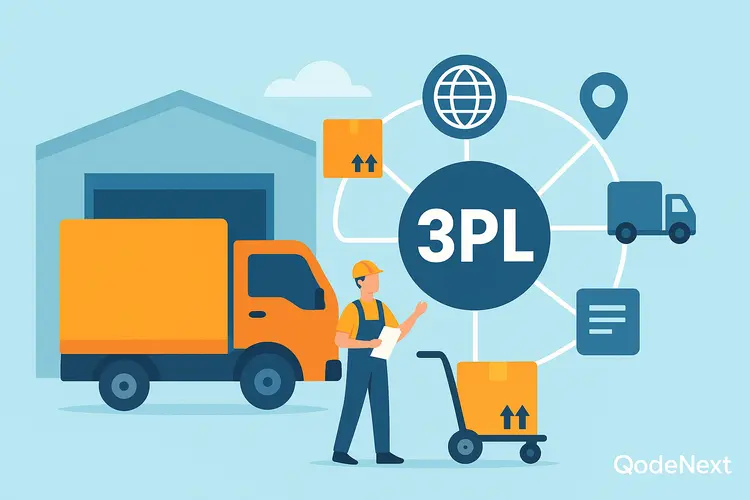Forecasting demand is an essential aspect of successful business operations. Whether you’re a budding entrepreneur or an established industry player, understanding and predicting customer demand is key to making informed decisions. Demand forecasting helps businesses optimize inventory, plan production, manage resources efficiently, and meet customer expectations.
In this comprehensive blog, we will delve into the intricacies of demand forecasting, exploring its importance, methodologies, and best practices. Join us as we unravel the world of demand forecasting and equip you with the knowledge and tools to anticipate and meet market demands effectively.
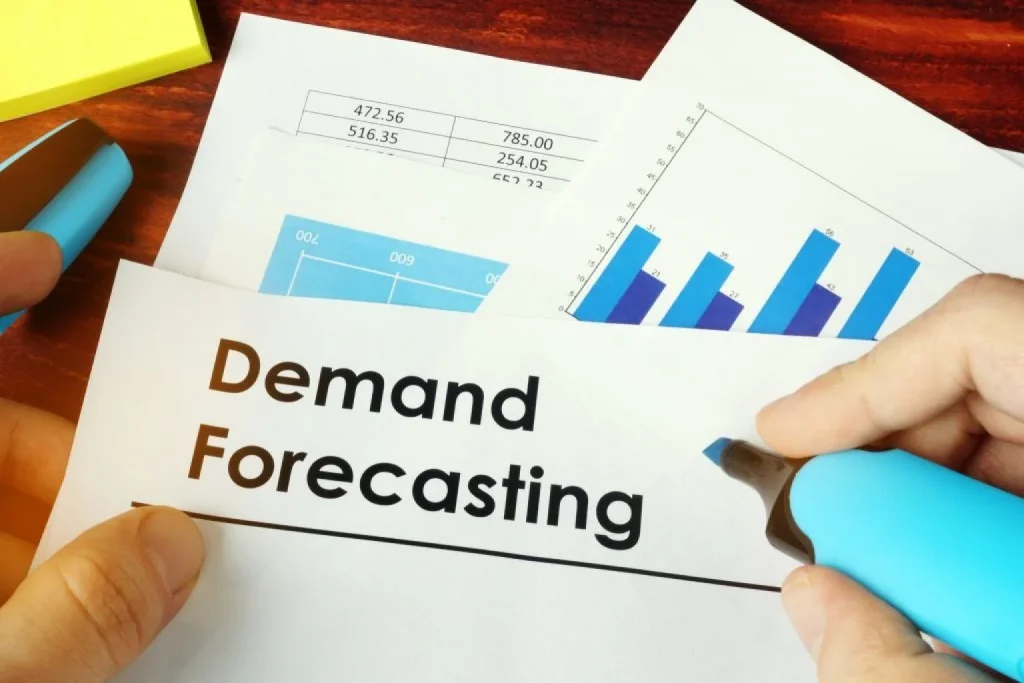
What Is Demand Forecasting?
Demand forecasting is a strategic process used by businesses to predict the future demand for their products or services. It involves analyzing historical data, market trends, customer behavior, and other relevant factors to estimate the number of goods or services that customers will likely purchase within a specific time frame. Key features of demand forecasting include:
- Data Analysis: Demand forecasting relies on a thorough analysis of historical sales data, customer preferences, market trends, and other relevant information. This data is used to identify patterns and factors that influence demand.
- Market Research: Understanding the market dynamics, consumer behavior, and competitor analysis is crucial for accurate demand forecasting. Market research helps identify factors such as seasonality, economic conditions, and emerging trends that can impact demand.
- Forecasting Techniques: Various statistical and analytical methods are employed to forecast demand. These techniques can range from simple approaches like moving averages to more sophisticated models such as regression analysis, time series analysis, and machine learning algorithms.
- Demand Segmentation: Businesses often segment their customer base to analyze demand patterns for different market segments or customer groups. This helps in tailoring marketing strategies and product offerings to specific target audiences.
- Collaboration and Feedback: Demand forecasting involves collaboration among various departments within an organization, including sales, marketing, production, and supply chain. Feedback from these departments helps refine the forecast by incorporating real-time information and adjusting for any changes in market conditions.
- Accuracy Monitoring: Demand forecasting is an iterative process that requires continuous monitoring and evaluation. Comparing the forecasted demand with actual sales data helps assess the accuracy of the forecasts and identify areas for improvement.
By utilizing demand forecasting, businesses can optimize inventory management, production planning, resource allocation, and pricing strategies, ultimately leading to improved operational efficiency and customer satisfaction.
An Overview of Steps in Demand Forecasting

Demand forecasting is a crucial aspect of business planning and decision-making processes. It involves estimating the future demand for a product or service, enabling organizations to optimize their production, inventory management, and resource allocation. The following steps provide an overview of the demand forecasting process:
- Define the objective: Clearly identify the purpose of the demand forecast, such as predicting sales, optimizing inventory levels, or planning production capacity.
- Gather historical data: Collect relevant historical data on sales, customer orders, market trends, and any other factors that may impact demand. This data serves as the foundation for forecasting models.
- Choose forecasting techniques: Select appropriate forecasting methods based on the nature of the data and the objective. Common techniques include time series analysis, regression analysis, and qualitative methods like market surveys and expert opinions.
- Clean and preprocess data: Ensure the data is accurate, complete, and free from any anomalies or outliers. Preprocess the data by removing any noise or irrelevant information that could affect the accuracy of the forecast.
- Apply forecasting models: Utilize the chosen forecasting techniques to analyze the historical data and generate forecasts for future demand. This may involve statistical algorithms, machine learning models, or a combination of both.
- Validate and refine the forecast: Assess the accuracy of the forecast by comparing it with actual demand data for a specific period. Refine the models and techniques if necessary to improve the accuracy of future forecasts.
- Incorporate external factors: Consider external factors that may influence demand, such as economic indicators, seasonal variations, market trends, and competitor behavior. Include these factors in the forecasting models to enhance the accuracy of the predictions.
- Monitor and update forecasts: Continuously monitor and update the demand forecasts as new data becomes available. Regularly evaluate the performance of the forecasts and adjust the models or techniques as needed to ensure ongoing accuracy.
By following these steps, businesses can effectively anticipate future demand patterns, make informed decisions, and enhance their overall operational efficiency.
Need for Demand Forecasting in Business Operations
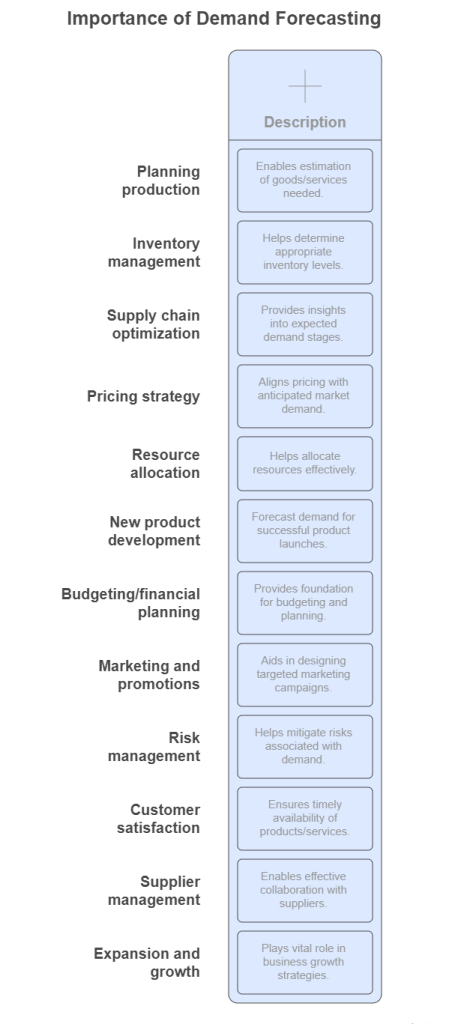
Demand forecasting is a crucial process that helps businesses anticipate the future demand for their products or services. By analyzing historical data, market trends, and other relevant factors, demand forecasting provides valuable insights for effective planning and decision-making.
It enables businesses to align their production, inventory, and supply chain management strategies with the expected customer demand, thereby optimizing operational efficiency and maximizing profitability. Here are the top 12 importance of demand forecasting:
- Planning production: Demand forecasting enables businesses to estimate the quantity of goods or services required in the future. This helps in planning production schedules, allocating resources, and optimizing manufacturing processes to meet the anticipated demand.
- Inventory management: Accurate demand forecasting helps businesses determine the appropriate inventory levels, reducing the risk of stockouts or overstocking. It minimizes carrying costs and ensures timely availability of products, enhancing customer satisfaction.
- Supply chain optimization: Demand forecasting facilitates efficient supply chain management by providing insights into the expected demand at different stages. It helps in optimizing procurement, transportation, and distribution activities, reducing costs and improving overall operational efficiency.
- Pricing strategy: By forecasting demand, businesses can align their pricing strategy with the anticipated market demand. It allows them to set competitive prices, optimize profit margins, and respond effectively to market dynamics.
- Resource allocation: Demand forecasting helps businesses allocate their resources effectively. It assists in determining staffing requirements, production capacity, and infrastructure needs, ensuring optimal resource utilization and cost management.
- New product development: Forecasting demand for new products is essential for successful product launches. It helps businesses identify potential market demand, assess market feasibility, and make informed decisions regarding product development and marketing strategies.
- Budgeting and financial planning: Accurate demand forecasting provides a foundation for budgeting and financial planning. It helps businesses estimate revenues, allocate resources, and forecast cash flows, enabling effective financial management and risk mitigation.
- Marketing and promotions: Demand forecasting aids in designing targeted marketing campaigns and promotional activities. It allows businesses to identify peak demand periods, plan advertising initiatives, and allocate marketing budgets more effectively.
- Risk management: Demand forecasting helps businesses mitigate risks associated with uncertain demand. By identifying potential fluctuations or downturns, businesses can take proactive measures to minimize the impact, such as adjusting production levels or diversifying their product portfolio.
- Customer satisfaction: Meeting customer demand is essential for enhancing customer satisfaction. Accurate demand forecasting ensures timely availability of products or services, reducing waiting times and improving customer experience.
- Supplier management: Demand forecasting enables businesses to collaborate effectively with suppliers. By sharing demand forecasts, businesses can negotiate better contracts, establish long-term partnerships, and ensure a reliable supply of materials or components.
- Expansion and growth: Demand forecasting plays a vital role in business expansion and growth strategies. It helps businesses identify new market opportunities, assess market potential, and make informed decisions regarding capacity expansion, geographic expansion, or diversification.
Overall, demand forecasting provides businesses with valuable insights to optimize operations, minimize risks, and make informed decisions across various functional areas. It is an essential tool for achieving business success in dynamic and competitive markets.
Key Features of Demand Forecasting
Demand forecasting is anchored by several core features that ensure its effectiveness:
- Data Analysis: Relies on historical sales data, customer preferences, and market trends to identify patterns influencing demand.
- Market Research: Involves understanding consumer behavior, competitor activity, and broader market dynamics to refine predictions.
- Forecasting Techniques: Utilizes a range of methods, from simple moving averages to advanced statistical models and machine learning algorithms.
- Demand Segmentation: Breaks down the customer base to analyze demand patterns for specific groups, enabling targeted strategies.
- Collaboration and Feedback: Encourages cross-departmental input from sales, marketing, production, and supply chain teams to incorporate real-time insights and adjust forecasts.
- Accuracy Monitoring: An iterative process where forecasts are continuously compared with actual outcomes to improve model precision.
Demand Forecasting Analysis: Methods and Techniques
A variety of analytical approaches are employed in demand forecasting:
- Time Series Analysis: Analyzes data points in chronological order to detect trends, seasonality, and cyclic patterns.
- Moving Averages: Smooths out short-term fluctuations to highlight underlying trends.
- Exponential Smoothing: Assigns greater weight to recent observations, making the forecast more responsive to recent changes.
- Regression Analysis: Assesses the relationship between demand and other variables (e.g., price, marketing spend).
- Qualitative Methods: Includes market surveys and expert opinions, especially useful when historical data is limited.
- Machine Learning and AI: Handles large, complex datasets and identifies non-linear patterns, enhancing forecast accuracy.
Benefits of Accurate Demand Forecasting
Accurate demand forecasting delivers numerous advantages:
- Optimized Inventory Management: Reduces the risk of overstocking or stockouts, minimizes carrying costs, and ensures timely product availability.
- Efficient Production Planning: Helps businesses align production schedules with anticipated demand, optimizing resource allocation and manufacturing processes.
- Supply Chain Optimization: Facilitates better procurement, transportation, and distribution planning, reducing costs and improving operational efficiency.
- Pricing Strategy Alignment: Enables businesses to set competitive prices and respond dynamically to market changes.
- Improved Customer Satisfaction: Ensures products are available when and where customers need them, reducing waiting times and enhancing the customer experience.
- Risk Management: Identifies potential demand fluctuations, allowing businesses to proactively adjust strategies and minimize risks.
- Budgeting and Financial Planning: Provides a foundation for revenue estimation, resource allocation, and cash flow forecasting.
Challenges in Demand Forecasting and How to Overcome Them
Despite its benefits, demand forecasting faces several challenges:
- Data Quality and Availability: Incomplete or inaccurate data can undermine forecast accuracy. Overcome by investing in robust data collection and preprocessing tools.
- Market Volatility: Rapid changes in consumer preferences or external events (e.g., economic downturns, pandemics) can disrupt forecasts. Address by continuously monitoring market trends and incorporating real-time data.
- Complexity of Models: Advanced models may require specialized skills and resources. Solution: Use user-friendly software and provide training to staff.
- Collaboration Barriers: Silos between departments can hinder information sharing. Encourage cross-functional teamwork and regular communication.
- External Factors: Factors like regulatory changes or competitor actions can impact demand. Include these variables in forecasting models and stay agile in response.
Additional Subheadings for Consideration
To further enrich the content, you might also include:
- Future Trends in Demand Forecasting: Emerging technologies and evolving methodologies shaping the future of forecasting.
- Real-World Applications of Demand Forecasting: Examples from industries such as retail, pharmaceuticals, and eCommerce.
- Technology in Demand Forecasting: The role of AI, machine learning, and analytics in modern forecasting.
- Best Practices for Implementing Demand Forecasting: Tips for successful adoption and integration into business processes.
- Case Studies: Success stories of companies leveraging demand forecasting for growth and efficiency.
Frequently Asked Questions (FAQs)
1. What is demand forecasting?
Demand forecasting is the process of estimating future customer demand for a product or service using historical data, market trends, and other relevant factors.
2. Why is demand forecasting important for businesses?
Accurate demand forecasting helps businesses optimize inventory, reduce costs, improve supply chain efficiency, and enhance customer satisfaction by avoiding stockouts or overstocking.
3. What are the main methods used in demand forecasting?
Common methods include time series analysis, moving averages, exponential smoothing, regression analysis, qualitative techniques (like expert opinions and market research), and advanced methods such as machine learning.
4. How does demand forecasting differ from sales forecasting?
Demand forecasting focuses on predicting overall customer demand, while sales forecasting specifically predicts sales volumes. Demand forecasting can also apply to service sectors beyond sales.
5. What is the difference between demand forecasting and demand planning?
Demand forecasting generates forecasts based on data, while demand planning uses these forecasts, along with commercial insights and assumptions, to inform business decisions and strategies.
6. How can businesses improve the accuracy of their demand forecasts?
Businesses can improve accuracy by using machine learning, incorporating real-time data, considering internal and external factors (like promotions and weather), and continuously reviewing and adjusting forecasts.
7. What challenges do companies face in demand forecasting?
Challenges include data quality issues, market volatility, complexity of models, and the need to account for external factors such as economic changes or competitor actions.
8. How do you forecast demand for a new product?
For new products, businesses can use historical data from similar products, analyze trends within product families, and combine this with marketing and promotional plans. Regular review and adjustment of forecasts are essential for new product launches.
9. What are the benefits of using advanced analytics and machine learning in demand forecasting?
Advanced analytics and machine learning can process large datasets, identify complex patterns, automate calculations, and improve forecast accuracy by considering more variables than traditional methods.
10. How often should demand forecasts be updated?
Demand forecasts should be reviewed and updated regularly—often weekly or monthly—to reflect changes in market conditions, customer behavior, and business decisions. Real-time data integration can further enhance responsiveness.
Conclusion
In conclusion, we can say that demand forecasting is essential for businesses to make informed decisions and optimize operations. Qodenext, a leading technology provider, offers advanced tools and expertise in demand forecasting. Their software uses machine learning and data analytics to generate accurate forecasts, empowering businesses to streamline operations and stay competitive. With Qodenext’s solutions, companies can achieve optimal inventory management, cost reduction, and drive business growth.
